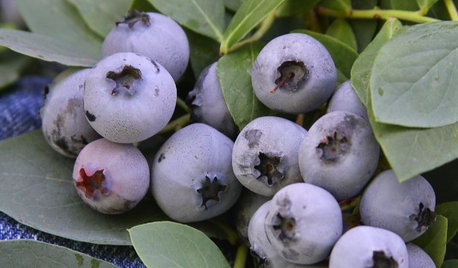Red Berry Mite or UV Sun Damage - BLACKBERRIES
scuzzynutty
11 years ago
Related Stories

EDIBLE GARDENSSummer Crop: How to Grow Blueberries
Plant blueberries in spring or fall for garden beauty through three seasons — and a sweet superfood in summer
Full Story
LIFEHow Your Landscaping Can Keep Burglars Away
Prevent home break-ins with strategic landscaping and good practices instead of menacing — and maybe less effective — measures
Full Story
SUMMER GARDENINGHouzz Call: Please Show Us Your Summer Garden!
Share pictures of your home and yard this summer — we’d love to feature them in an upcoming story
Full Story
FALL GARDENING7 Reasons Not to Clean Up Your Fall Garden
Before you pluck and rake, consider wildlife, the health of your plants and your own right to relax
Full Story
HOUSEPLANTS8 Essentials for Healthy Indoor Plants
Houseplants add so much to our homes — and can thrive when grown in the right conditions. Keep these tips in mind
Full Story
GARDENING GUIDESHow to Keep Your Citrus Trees Well Fed and Healthy
Ripe for some citrus fertilizer know-how? This mini guide will help your lemon, orange and grapefruit trees flourish
Full Story
GARDENING GUIDES15 Favorites for Your Summer Edible Garden
Get your summer garden off to a good start with these popular fruits and vegetables
Full Story
FARM YOUR YARDIf You Have Room for Only One Fruit Tree ...
Juice up a small garden with one of these easier-care or worth-the-effort fruit trees for a mild climate
Full Story
GARDENING AND LANDSCAPINGWorld of Design: 10 Home Gardeners Show Us Their Sweet Summer Harvests
From New York to Tokyo, these gardeners have turned their yards, terraces and rooftops into places of bounty
Full Story
VACATION HOMESHouzz Tour: A Peaceful Lake House Rises From the Rubble
Crashing trees left this Vermont home uninhabitable, but a redesign made it better than ever
Full Story






gator_rider2
larry_gene
Related Professionals
Walnut Landscape Architects & Landscape Designers · Deer Park Landscape Contractors · Edinburg Landscape Contractors · Glendale Heights Landscape Contractors · Hawaii Landscape Contractors · New Providence Landscape Contractors · Oak Forest Landscape Contractors · Pacifica Landscape Contractors · Paso Robles Landscape Contractors · Salem Landscape Contractors · Soddy Daisy Landscape Contractors · Tuscaloosa Landscape Contractors · Northlake Landscape Contractors · Norridge Landscape Contractors · North Hills Landscape ContractorsscuzzynuttyOriginal Author
larry_gene
scuzzynuttyOriginal Author
larry_gene
gator_rider2